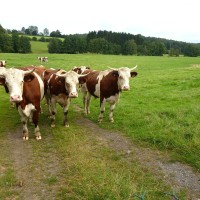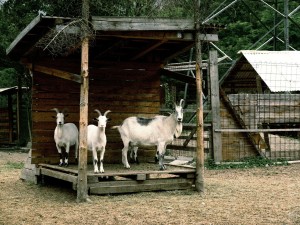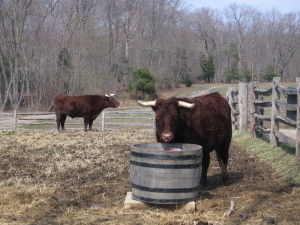

How Global Warming & Climatic Changes Affect Dairy Cattle
 Posted by SLN Staff on Jun 1st, 2014 | Comments Off on How Global Warming & Climatic Changes Affect Dairy Cattle
Posted by SLN Staff on Jun 1st, 2014 | Comments Off on How Global Warming & Climatic Changes Affect Dairy Cattle 

One of the most prominent challenges that environmental scientists and policy makers face today is global warming. The major causes of global warming, as we already know, is the increase in the concentration of greenhouse gases in the atmosphere, mainly CO2 , NH4, and NO3. The concentration of these gases in the atmosphere has been increasing at a rapid rate, ever since human beings started using fossils to power automobiles, factories, machinery, and homes.
Between 1970 and 2010, the concentration of greenhouse gases in the atmosphere increased over 75%. At this current rate of emission, the global temperature is expected to rise 2 degrees Fahrenheit by the end of 21st century. Scientists also predict that a rise in global temperature of 2 degrees is enough to cause wide spread global and environmental disruptions.
Effect of climatic changes on animals
A rise in global temperature can have various effects on natural factions of animals, which may cause complications in animals and their behavior. It may affect animals’ eating habits, availability of pray, increase in diseases and infections, loss in appetite, weaker immune systems, shift in natural habitat, loss in productivity, and in some cases, many species will also become extinct. When the summer heat is at extreme levels, both domestic and wild animals are affected. Some of the animals will experience extreme stress due to the heat. Animals are also indirectly affected by rising heat during the summer due to loss in their natural supply of food, shortages of water, and loss in soil fertility and shortages of desired vegetation.
Global warming and dairy cattle
Dairy cows are affected by the summer heat and warming temperatures the most because of their high metabolism rates and poor water retention systems in their gastrointestinal tracts and kidneys. Most animals can cope with extremely hot temperatures by altering their natural body heat production by reducing their metabolism rate. Reducing dry matter intake can also help in reducing the core body temperature, reducing body heat production during ruminal fermentation, and digestion processes.
 Dairy cattle start to show a decline in their food intake as the temperature of the day exceeds 80 degrees Fahrenheit. When the day temperature reaches 95 degrees, cattle can reduce food intake by up to 35%. Their feed intake will increase if the dairy cows are kept in the shed, and if they are fed during night time.
Dairy cattle start to show a decline in their food intake as the temperature of the day exceeds 80 degrees Fahrenheit. When the day temperature reaches 95 degrees, cattle can reduce food intake by up to 35%. Their feed intake will increase if the dairy cows are kept in the shed, and if they are fed during night time.
Decrease in dry matter intake is also prominent if animals are fed with a roughage based diet, or if the food is not easily digestible. Therefore, it is important to feed the dairy cattle moist and digestible grasses, rather than hay during the hot summer days. Increase in water intake can also make them full and reduce food intake. Microgreens are high in nutrition, it contains high levels of moisture, are highly digestible, and animals will prefer young microgreen grasses over hay during summer heat stress.
Thermal heat stress and physiological changes
 cattle may show several physiological changes due to heat stress. These are natural physiological and metabolic responses of the animals to cope whit heat stress. Many of these alterations are the natural mechanism of the body to maintain normal body temperatures. Thermally stressed animal often show higher respiratory rates and higher than normal rectal temperatures. Animals will also show increased heart rates because blood will flow more rapidly towards the peripheral tissues to dissipate core body heat more quickly through skin. A higher respiration rate is a good indicator of a heat stressed animal. Although other factors such as general health condition of the animal should also be taken into consideration.
cattle may show several physiological changes due to heat stress. These are natural physiological and metabolic responses of the animals to cope whit heat stress. Many of these alterations are the natural mechanism of the body to maintain normal body temperatures. Thermally stressed animal often show higher respiratory rates and higher than normal rectal temperatures. Animals will also show increased heart rates because blood will flow more rapidly towards the peripheral tissues to dissipate core body heat more quickly through skin. A higher respiration rate is a good indicator of a heat stressed animal. Although other factors such as general health condition of the animal should also be taken into consideration.
Effect of temperature on metabolism and energy balance
Summer heat is often responsive for a negative energy balance in animals, resulting from higher maintenance energy requirements and lowered energy intakes. Animals tend to lose weight and reduce production during the summer. The amount of insulin in blood may become increased and cause more negative energy balance.
Summer heat and loss of electrolytes
 During the summer, the amount of sodium through urine and amount of potassium loss through the skin increases, so you need to supplement your animals with a solution of sodium and potassium. Due to reduced food intake, animals may suffer from electrolyte imbalance.
During the summer, the amount of sodium through urine and amount of potassium loss through the skin increases, so you need to supplement your animals with a solution of sodium and potassium. Due to reduced food intake, animals may suffer from electrolyte imbalance.
Summer heat can have both direct and indirect effects on animal health during summer, especially if the animals are lactating. The physiological impacts range from simple disturbances to severe organ dysfunctions and death. Reduced food intake in combination with higher requirement of energy to retain normal body functions can create more negative energy among dairy cattle. Animals not fed enough nutritious supplants high in food value make them weak and more suitable to diseases. Mortality rates of animals are directly related to heat wave during summer. Pay special attention to your dairy cows during summer to reduce summer heat stress.
Want more information sent to you? Please signup to receive free information sent to your regularly.
Source: Sustainable Livestock Nutrition







